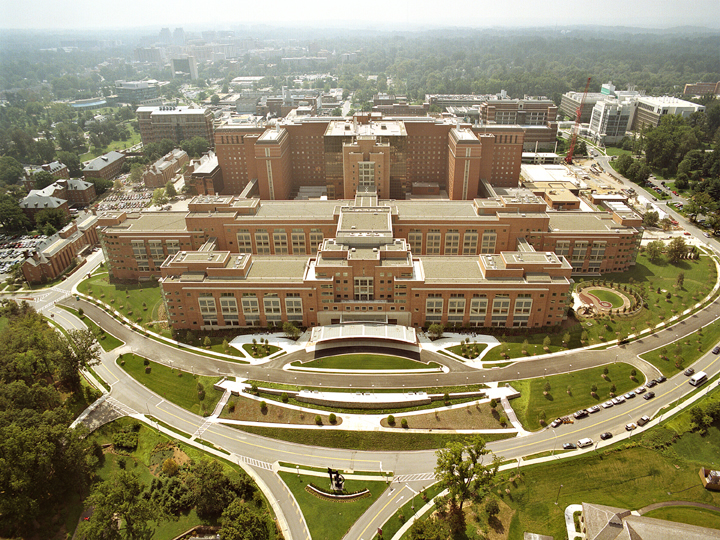
America’s nonprofit sector is booming. There are now over one and a half million nonprofits registered with the IRS, contributing nearly one trillion dollars to the economy. Private giving has risen to $430 billion, the highest level ever.[1] Such private philanthropy often accomplishes things government services cannot. Private philanthropy allows for experimentation with a broader range of ideas, producing a greater variety of solutions and approaches to problem-solving in general. Philanthropic organizations often achieve considerably more success than government in addressing pressing issues. In 56 out of 71 studies that compared the efficiency of public agencies and philanthropic organizations that offer the same services, the private provider was more effective.[2]
As Philanthropy magazine editor-in-chief Karl Zinsmeister recently wrote in the Wall Street Journal, private philanthropy’s comparative success has made it a target for politicians and editorialists who peddle bigger government and view philanthropy as its competitor.[3] But government should not view philanthropy as a competitor. As Zinsmeister writes, “America’s highly decentralized philanthropy is one of its most pluralistic and democratic elements. Philanthropy disperses authority, gives individuals direct opportunities to change their communities, and lets nonmainstream alternatives have their day in the sun.” Politicians and officials should see philanthropic organizations as incubators of ideas that government can scale.
Since modern philanthropy emerged in the 19th Century, nonprofits have been quick to address societal ills when politicians hesitate. Historically, government has recognized the effectiveness of many philanthropic solutions, creating a long tradition of federal, state, and local governments adopting and expanding projects started by nonprofits.
One famous example is the establishment of Carnegie libraries. Andrew Carnegie built and donated over 1,500 public libraries across the United States to increase access to education for all Americans. Carnegie, an immigrant who had educated himself with the books he read while working from dawn to dusk starting at age thirteen, believed that public libraries would be especially beneficial for immigrants trying to assimilate and people who wanted to learn but were either too old for tax-payer funded high schools or could not afford to spend time in a formal classroom.[4] Most significantly, Carnegie broke from earlier trends in library philanthropy that produced magnificent buildings that were too expensive for local taxes to support. The Carnegie libraries were efficient and functional, an architectural innovation adopted by local governments across the country seeking their own affordable public libraries.[5]
The problems facing our growing world come at a pace too fast for the government to lumber in search of effective solutions. When governments see winning ideas that are better than their own, they should try to scale them. One form this can take is providing educators with tools that are experimentally proven to lead to more successful student outcomes. Math Shelf is a tablet-based app that has shown statistically significant improvements in mathematics performance among preschool students.[6] The program has been expanded up to first grade, and studies have shown that students can learn more than a year and a half of additional mathematics with only twenty minutes of app use each day compared to students who did not use the app at all. Studies of Head Start, in comparison, show that the federally-run program has no discernible positive impact on participating students by the time they reach third grade.[7] Head Start’s budget of $10 billion might not represent the best use of funds, whereas expanded access to tools like Math Shelf could help educators nationwide achieve better outcomes for their students.
But sometimes scaling fails. Policy makers should understand that what works to improve education outcomes for low-income students in inner-city Detroit might not work in Appalachia. In addition to adopting the winning solutions themselves, the government should incentivize local experimentation so that communities can tailor solutions to their unique situations.
In Chicago, local officials are doing exactly that. Violence plagues Chicago, and the city’s police have struggled to get homicides and shootings under control. 2016 was the most violent year in two decades for the city, with 780 murders and 4,300 shootings.[8] In 2016, only 29% of murder investigations led to an arrest. Arnie Duncan, a Chicago native and former U.S. Secretary of Education under President Obama, realized that policing was not enough. He created a non-profit organization called Chicago CRED, which has sought a more effective approach to gun violence. Duncan and his team have worked with thoughtful and experienced philanthropists like Laurene Powell Jobs, local officials, like-minded organizations, and the communities most at risk of violent crime to experiment with street outreach, life coaching, counseling, and workforce development. With private funding, CRED could allocate resources more creatively. Chicago Mayor Lori Lightfoot is adopting a similarly holistic approach to public safety through targeted investment in the South and West side neighborhoods. The results are already staggering. Shooting dropped 8% in 2018 and 9.7% in 2019.[9] There is more work to be done, but Chicago’s model of community-based solutions is a roaring success that other cities should emulate.
In general, government problem-solvers need to take chances on younger talent, higher-risk research, and a range of projects encouraged by private philanthropy in order to foster the development of the best ideas and solutions. They need to test unorthodox methods and move away from tired policies that don’t work.
This iterative approach could improve our country’s biomedical research system. The successes of privately funded biomedical research outpace those of the National Institute of Health (NIH) not because they have more resources but because they better allocate their resources. Nationally, total inputs for medical research is substantially increasing, but the results are not commensurate to this increase.[10] At the same time, the number of scientists being trained has continued to rise, breeding hyper-competition for federal funds that researchers at the National Academy of Sciences believe “suppresses the creativity, cooperation, risk-taking, and original thinking required to make fundamental discoveries.”[11]
Competition for NIH funding, in particular, has made the biomedical research system favor projects that have guaranteed results conducted by older, more established academics, rather than higher-risk, unconventional projects and younger researchers with new ideas. In 1980, NIH granted twelve times as much funding to researchers under 40 than over 50, but today five times as much funding goes to the older cohort. In the current system, younger academics feel immense pressure to conform to the tired formula of grant acquisition, producing stagnation where innovation should be encouraged. Many advocates of the NIH argue that the institution simply needs more resources, but additional funding alone will not correct the systemic problems hampering the NIH.
Damon Runyon Cancer Research Foundation has taken a different approach to funding research, and the results are impressive. Their award programs specifically target young cancer researchers early in their careers to do high-risk research that wouldn’t happen otherwise. Former grantees help determine which researchers have the most promise. Damon Runyon researchers have won twelve Nobel Prizes, and sixty-five of their scientists have been elected to the National Academy of Sciences. According to the nonprofit rating organization Charity Navigator, Damon Runyon’s results have “exceeded industry standards and outperformed most charities in its cause.”[12]
For NIH and other funders to improve, they cannot just fund scientists who have proven their success or increase funding overall. In short, NIH should take inventory of its procedures and open itself to the better practices of other organizations, such as funding riskier research and younger researchers. NIH has a prominent role in our country’s scientific community, which makes it all the more important that it incorporates the promising approaches of private research funders.
It is no surprise that studies have found that 71% of American trust nonprofits over government to solve the most pressing issues of our time. Free and dynamic societies allow private individuals to experiment, innovate, and flourish. It is a perennial challenge for government to innovate and improve quickly, but there are many relevant lessons that public officials can learn from private citizens’ philanthropic ventures. Politicians and officials should work to fix the inefficiencies that plague public programs and use solutions from private philanthropy so that our government can more effectively achieve the results its citizens deserve.
Disclaimer: The chair of the Cicero Institute, Joe Lonsdale is a donor to UCSF, IGI, and Damon Runyon.
[1] https://nccs.urban.org/project/nonprofit-sector-brief#overview
[2] https://www.philanthropyroundtable.org/almanac/article/fixing-problems-via-philanthropy-vs.-government
[3] https://www.wsj.com/articles/the-war-on-philanthropy-11578528352?mod=hp_opin_pos_2]
[4] https://www.carnegie.org/interactives/foundersstory/#!/
[5] https://www.jstor.org/stable/990662
[6] https://www.mathshelf.com/pdf/MathShelf_EED.pdf
[7] https://www.acf.hhs.gov/sites/default/files/opre/head_start_executive_summary.pdf
[8] https://www.chicagotribune.com/news/criminal-justice/ct-chicago-violence-2019-results-20200101-xqrtozhu3zgbpjiopwaaujjcgq-story.html
[9] Ibid.
[10] https://www.theatlantic.com/science/archive/2019/07/we-need-new-science-progress/594946/
[11] https://www.ncbi.nlm.nih.gov/pmc/articles/PMC4000813/
[12] https://www.charitynavigator.org/index.cfm?bay=search.summary&orgid=4948

